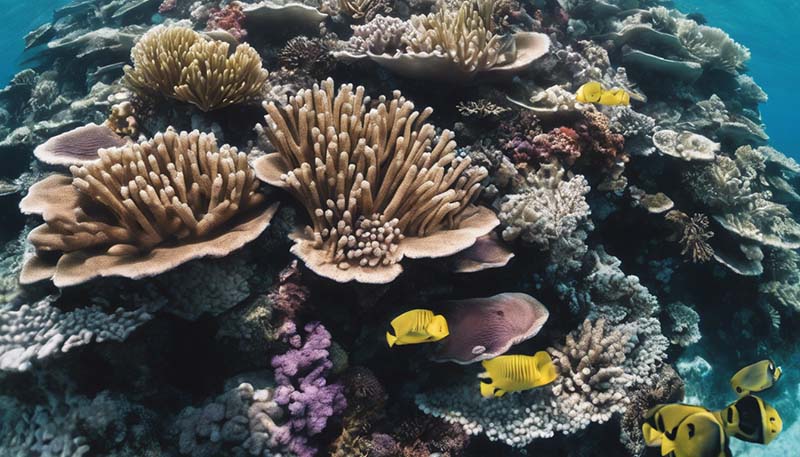The Great Barrier Reef: A Case Study in Environmental Conservation
The Great Barrier Reef (GBR) is the world's largest coral reef system, comprising over 2,900 individual reefs and 900 islands stretching for over 2,300 kilometers along the northeastern coast of Australia. It is a UNESCO World Heritage site and is renowned for its remarkable biodiversity, aesthetic beauty, and cultural significance. However, the GBR is under threat from various environmental pressures, making it a critical case study in global conservation efforts.
Threats to the Great Barrier Reef
Climate Change
Rising sea temperatures due to climate change are a significant threat, leading to coral bleaching events where corals expel the symbiotic algae that provide them with nutrients, leaving them vulnerable to disease and death.
Advertisement
Ocean Acidification
The ocean's increasing acidity, a result of absorbing carbon dioxide from the atmosphere, hinders coral growth and weakens their exoskeletons.
Overfishing and Invasive Species
Overfishing disrupts the balance of marine ecosystems, while invasive species can outcompete native species for resources.
Coastal Development and Pollution
Runoff from the land, including agricultural fertilizers and sewage, can lead to algal blooms that deplete oxygen in the water, harming marine life.
Conservation Efforts
Legal and Policy Measures
Australian government initiatives include the Great Barrier Reef Marine Park Zoning Plan, which restricts certain activities to protect the reef's ecological integrity.
Research and Monitoring
Organizations like the Australian Institute of Marine Science (AIMS) conduct research to better understand the reef's dynamics and inform conservation strategies.
Community Engagement and Education
Educational programs and eco-tourism initiatives raise awareness and foster a sense of stewardship among locals and visitors.
Restoration and Adaptation
Restoration efforts such as coral gardening and the use of assisted reproductive techniques aim to help the reef recover. Additionally, promoting the resilience of the ecosystem through adaptation measures is crucial.
Challenges and the Way Forward
The conservation of the Great Barrier Reef faces numerous challenges, including political, economic, and social factors that can sometimes hinder progress. International cooperation, sustainable tourism practices, and continued investment in scientific research are vital for the reef's long-term survival.

Conclusion: The Great Barrier Reef is a beacon of biodiversity and a testament to the natural wonders of our planet. Its preservation is not just a local or national concern but a global imperative. Through collaborative efforts that address the complex web of threats it faces, we can work towards a sustainable future for this iconic natural treasure.
References
A list of references and further reading materials would go here, including scientific papers, government reports, and reputable news articles.
Comment